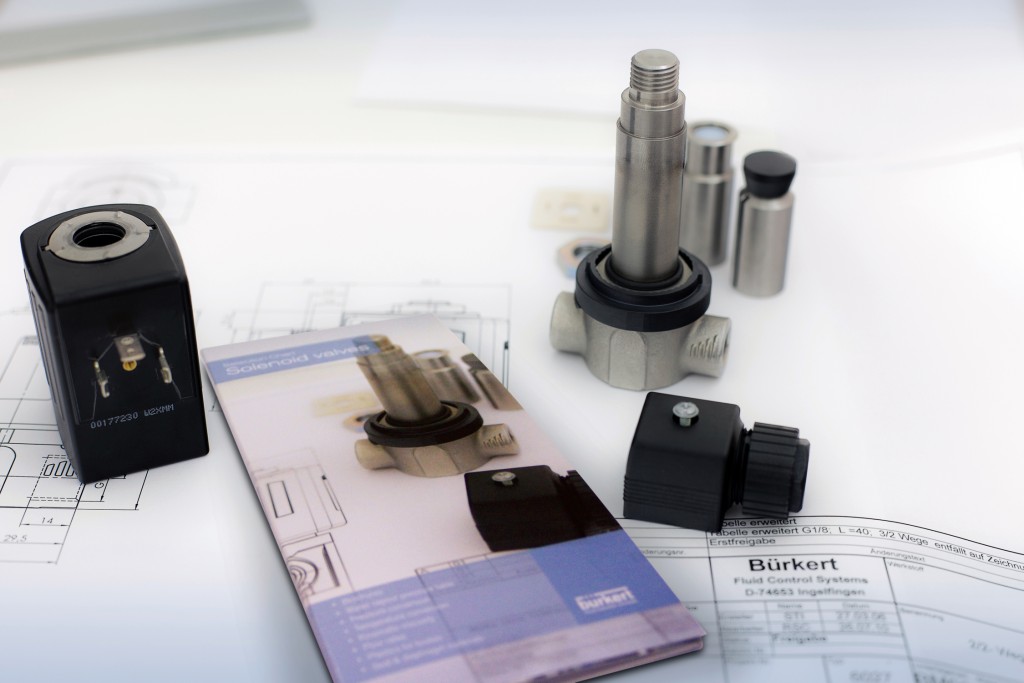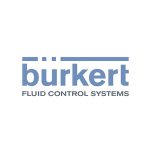Bürkert has a solenoid valve for every occasion
Solenoid valves are an essential component in the control of fluids and gases. The basic design has subtly evolved over the years, to the stage where there is now a solenoid valve to suit just about every application. In this article, we speak to Kelly Booth, solenoid valve specialist at Bürkert UK, to find out how to select the ideal solenoid valve.
You would think that selecting a solenoid valve was simple. But it's a decision that calls for in-depth knowledge of the process under control, as well as expertise in the materials and designs available, to make an informed choice. Matching the most suitable design to your application will ultimately save you a great deal of headaches down the line.

Direct acting
“The first and most obvious characteristic of a solenoid valve is to determine whether it is direct acting or pilot operated,” says Kelly Booth, solenoid valve specialist at Bürkert UK. “With a direct acting solenoid valve, the action of the solenoid plunger directly opens or closes the orifice. This type of solenoid is required when there is no line pressure to maintain the valve in the desired position.
“A normally closed (NC) version will use a spring to keep the valve closed until the solenoid is energised and the coil will lift the plunger against the spring force to open the valve. Conversely, a normally open (NO) design uses the spring to keep the valve open allowing the media to flow until the solenoid is energised,” adds Kelly.
Pilot operated
“In this design, there is a pilot and bleed orifice that uses line pressure to operate the main valve,” continues Kelly. “When the solenoid is energized, the coil opens the pilot orifice and relieves pressure from the top of the valve piston or diaphragm to the outlet side of the valve. This results in an unbalanced pressure, lifting the piston or diaphragm off the main orifice. When the solenoid is de-energized, the pilot orifice is closed and full line pressure is applied to the top of the piston or diaphragm, which together with spring assistance, closes the valve.
“Pilot operated solenoid valves require a minimum pressure differential across the valve to keep them open or closed and therefore they can only operate with a suitable upstream pressure differential and do not operate at zero pressure. Pilot operated solenoid valves can provide high flow rates at high pressures with lower power consumption,”
Rockers, flippers and pivots
According to Kelly: “The armature design should be carefully considered with relation to the media that is being controlled. Pivoted armatures allow the use of a media separating diaphragm which enables the valve to be used in applications involving corrosive, contaminated or aggressive fluids. This style of valve can be easily mounted in a manifold and, unlike the plunger type, the 3/2-way version has all three ports in the same plane.
“An alternative design is the rocker armature which is often used in microfluidic applications where small dead volumes and flush-ability are of prime importance. The compact design, combined with the small and efficient coil, enhance the suitability for aggressive or ultra-pure media. These attributes also make the design suitable as a pilot for pneumatic control valves in both hazardous and non-hazardous areas.”
She adds: “The flipper design uses a vertical armature that moves a flexible sealing system between two opposing seats. Bürkert has developed this principle for microfluidics with the possibility of using a valve that is only 4.5 mm wide. Again the compact design and encapsulated sealing make this type of solenoid valve suitable for applications involving both aggressive and ultra-pure media.”
Conclusion
The solenoid valve reigns supreme when it comes to fluid control systems. That said, they need to be properly specified to deliver reliable and efficient service. Regardless of whether you're designing a new system, or replacing an existing component, Bürkert has the expertise and experience to guide your selection process.
For more information on solenoid valve design, chemical resistance properties or applications in hazardous areas visit the Bürkert website www.burkert.co.uk.
Get the latest process industry news
Interested in receiving even more industry-leading news from Process Industry Forum delivered directly to your inbox? Then sign up to our free newsletter. Bringing you the latest news, trends, innovations and opinion from across the process industry, our exclusive newsletter gives you all the industry insights of the moment in one, easy-to-digest bulletin. Stay ahead of the competition with regular process industry news instalments from PIF.

